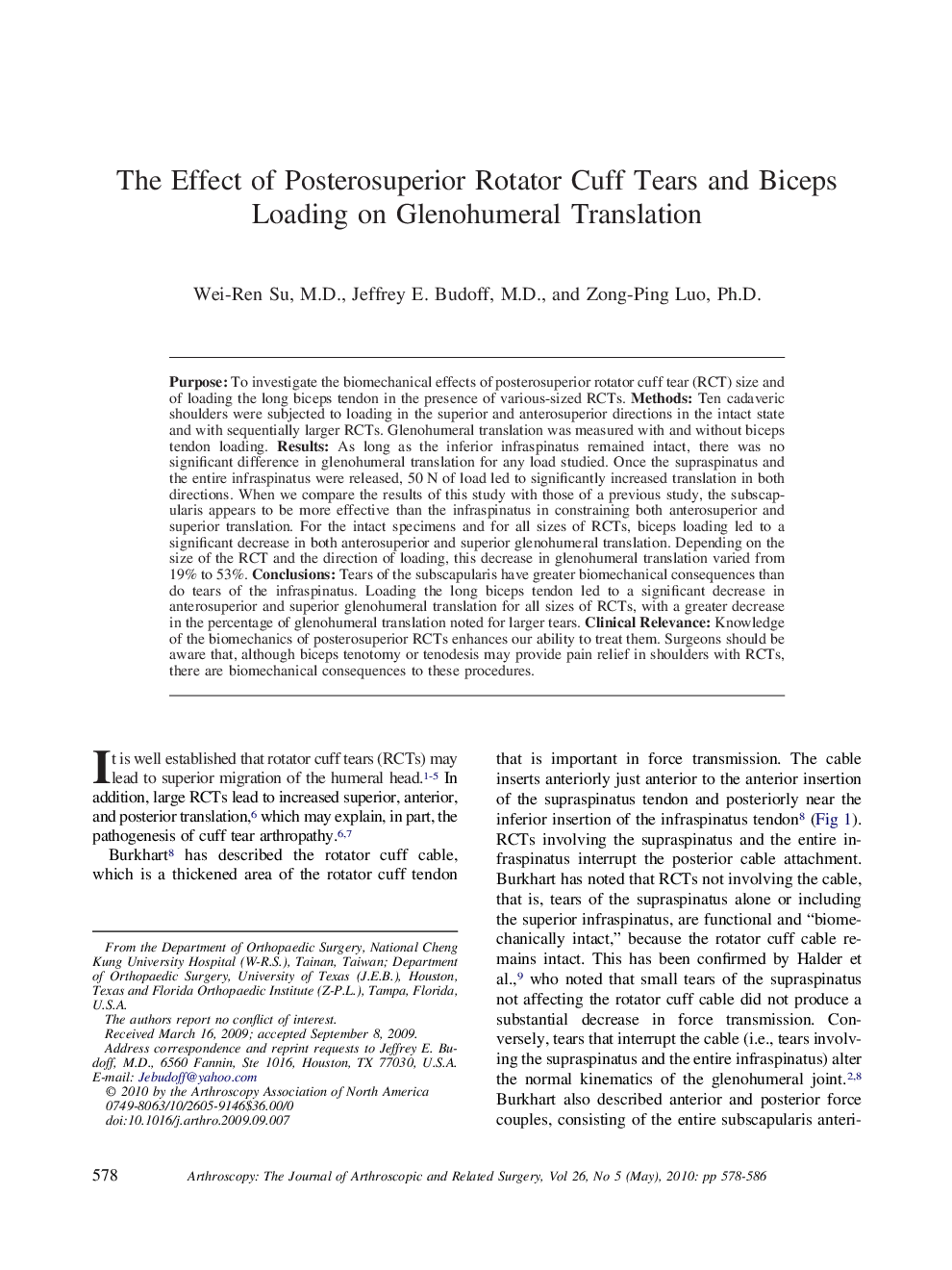| Article ID | Journal | Published Year | Pages | File Type |
|---|---|---|---|---|
| 4045083 | Arthroscopy: The Journal of Arthroscopic & Related Surgery | 2010 | 9 Pages |
PurposeTo investigate the biomechanical effects of posterosuperior rotator cuff tear (RCT) size and of loading the long biceps tendon in the presence of various-sized RCTs.MethodsTen cadaveric shoulders were subjected to loading in the superior and anterosuperior directions in the intact state and with sequentially larger RCTs. Glenohumeral translation was measured with and without biceps tendon loading.ResultsAs long as the inferior infraspinatus remained intact, there was no significant difference in glenohumeral translation for any load studied. Once the supraspinatus and the entire infraspinatus were released, 50 N of load led to significantly increased translation in both directions. When we compare the results of this study with those of a previous study, the subscapularis appears to be more effective than the infraspinatus in constraining both anterosuperior and superior translation. For the intact specimens and for all sizes of RCTs, biceps loading led to a significant decrease in both anterosuperior and superior glenohumeral translation. Depending on the size of the RCT and the direction of loading, this decrease in glenohumeral translation varied from 19% to 53%.ConclusionsTears of the subscapularis have greater biomechanical consequences than do tears of the infraspinatus. Loading the long biceps tendon led to a significant decrease in anterosuperior and superior glenohumeral translation for all sizes of RCTs, with a greater decrease in the percentage of glenohumeral translation noted for larger tears.Clinical RelevanceKnowledge of the biomechanics of posterosuperior RCTs enhances our ability to treat them. Surgeons should be aware that, although biceps tenotomy or tenodesis may provide pain relief in shoulders with RCTs, there are biomechanical consequences to these procedures.
